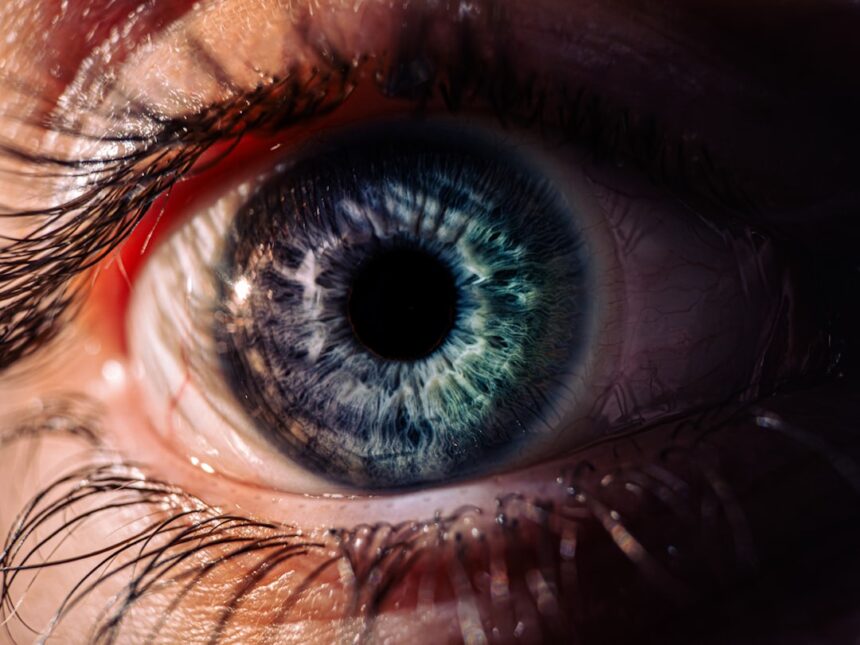Neurological blind spots are fascinating yet often misunderstood phenomena that can significantly impact an individual’s perception and interaction with the world. These blind spots arise not from physical obstructions in the visual field but from the brain’s intricate processing of information. As you delve into this topic, you will discover how these blind spots can affect your daily life, influencing everything from your ability to navigate your environment to your understanding of social cues.
Understanding neurological blind spots is essential for anyone seeking to comprehend the complexities of human cognition and perception. As you explore the concept of neurological blind spots, you may find yourself questioning how much of what you perceive is shaped by your brain’s interpretations rather than the actual stimuli around you. This exploration can lead to a deeper appreciation of the brain’s remarkable capabilities and its limitations.
By examining the mechanisms behind these blind spots, you can gain insights into how they manifest in various contexts, ultimately enhancing your understanding of human behavior and cognition.
Key Takeaways
- Neurological blind spots are areas of the visual field that are not perceived due to damage or dysfunction in the brain’s visual processing system.
- The brain processes visual information through a complex network of neurons and specialized areas, which can be affected by various factors leading to blind spots.
- Types of neurological blind spots include scotomas, hemianopsia, and cortical blindness, each with different underlying causes and effects on vision.
- Causes of neurological blind spots can range from traumatic brain injury and stroke to neurological conditions such as multiple sclerosis and Alzheimer’s disease.
- Symptoms and effects of neurological blind spots can include difficulty with reading, navigating, and recognizing objects, as well as challenges with balance and coordination.
Understanding the Brain’s Processing of Information
To grasp the concept of neurological blind spots, it is crucial to understand how your brain processes information. Your brain receives a constant stream of sensory input, which it must interpret and organize to create a coherent picture of your surroundings. This process involves complex neural pathways and networks that filter, prioritize, and integrate information from various senses.
However, this intricate system is not infallible; it can lead to gaps in perception, resulting in what we refer to as neurological blind spots. Your brain employs a variety of strategies to manage the overwhelming amount of information it encounters daily. For instance, it often relies on heuristics or mental shortcuts to make quick decisions based on limited data.
While these strategies can be efficient, they can also lead to oversights or misinterpretations. As you navigate through life, your brain may inadvertently overlook certain details or fail to recognize specific patterns, creating blind spots that can affect your understanding of reality.
Types of Neurological Blind Spots

Neurological blind spots can manifest in several forms, each with distinct characteristics and implications. One common type is the attentional blind spot, where your focus on a particular task or object causes you to miss other relevant stimuli in your environment. For example, when you concentrate intently on reading a book, you may fail to notice someone entering the room or a sound in the background.
This phenomenon highlights how selective attention can create gaps in your awareness. Another type is the perceptual blind spot, which occurs when your brain fails to process certain visual information due to its inherent limitations. This can happen in situations where your visual field is obstructed or when your brain is overwhelmed by competing stimuli.
For instance, if you are driving and distracted by a conversation, you might not notice a pedestrian crossing the street until it’s too late. Understanding these different types of blind spots can help you recognize when they occur in your own life and how they might influence your decisions and actions.
Causes of Neurological Blind Spots
| Cause | Description |
|---|---|
| Glaucoma | Increased pressure in the eye leading to damage of the optic nerve |
| Macular degeneration | Deterioration of the central part of the retina leading to blind spots |
| Optic neuritis | Inflammation of the optic nerve causing vision loss |
| Retinal detachment | Separation of the retina from the back of the eye leading to vision loss |
The causes of neurological blind spots are multifaceted and can stem from various factors, including cognitive overload, neurological conditions, and even emotional states. Cognitive overload occurs when your brain is bombarded with too much information at once, leading to a diminished capacity for processing all incoming stimuli. In such cases, your brain may prioritize certain inputs while neglecting others, resulting in blind spots that can affect your awareness and decision-making.
Neurological conditions such as stroke, traumatic brain injury, or neurodegenerative diseases can also contribute to the development of blind spots. These conditions may disrupt normal brain function, impairing your ability to process information accurately. Additionally, emotional states like stress or anxiety can further exacerbate these issues by diverting your attention away from critical details in your environment.
Recognizing these causes is essential for understanding how neurological blind spots can arise and affect your daily life.
Symptoms and Effects of Neurological Blind Spots
The symptoms of neurological blind spots can vary widely depending on their nature and underlying causes. You may experience difficulties in recognizing faces or objects, leading to social challenges and misunderstandings. For instance, if you struggle with prosopagnosia, a condition characterized by an inability to recognize familiar faces, you might find yourself feeling isolated or embarrassed in social situations.
Moreover, neurological blind spots can have broader effects on your cognitive functioning and overall quality of life.
This can lead to frustration and anxiety as you navigate daily activities that require attention and awareness.
Understanding these symptoms is crucial for identifying when you or someone you know may be experiencing neurological blind spots and seeking appropriate support.
Diagnosing Neurological Blind Spots

Diagnosing neurological blind spots often involves a comprehensive evaluation by healthcare professionals specializing in neurology or psychology. During this process, you may undergo various assessments designed to measure your cognitive abilities, attention span, and perceptual skills. These assessments can help identify specific areas where you may be experiencing blind spots and provide valuable insights into their underlying causes.
This holistic approach allows for a more accurate diagnosis and helps tailor treatment plans that address your unique needs. By understanding the diagnostic process, you can better advocate for yourself or a loved one who may be struggling with neurological blind spots.
Treatment and Management of Neurological Blind Spots
Treatment and management of neurological blind spots depend on their underlying causes and severity. In some cases, addressing contributing factors such as stress or cognitive overload may alleviate symptoms. For instance, practicing mindfulness techniques or engaging in relaxation exercises can help improve focus and reduce distractions in your environment.
In more severe cases where neurological conditions are involved, medical interventions may be necessary. These could include medications aimed at managing symptoms or therapies designed to enhance cognitive functioning. Collaborating with healthcare professionals can help you develop a personalized treatment plan that addresses both the symptoms and root causes of your neurological blind spots.
Rehabilitation and Therapy for Neurological Blind Spots
Rehabilitation and therapy play a crucial role in helping individuals cope with neurological blind spots and regain their cognitive abilities. Cognitive rehabilitation therapy focuses on improving specific cognitive skills that may have been affected by neurological conditions. Through targeted exercises and activities, you can work on enhancing attention, memory, and problem-solving skills.
Additionally, occupational therapy may be beneficial in helping you adapt to daily challenges posed by neurological blind spots. Occupational therapists can provide strategies for managing tasks at home or work while accommodating any limitations you may experience. By engaging in rehabilitation and therapy, you can take proactive steps toward improving your quality of life despite the challenges posed by neurological blind spots.
Coping Strategies for Living with Neurological Blind Spots
Living with neurological blind spots requires developing effective coping strategies that enable you to navigate daily life more smoothly. One essential strategy is creating structured routines that minimize distractions and enhance focus. By establishing consistent patterns for tasks such as work or study, you can reduce cognitive overload and improve your ability to concentrate.
Another helpful approach is utilizing assistive technologies designed to support individuals with cognitive challenges. Tools such as reminder apps or visual aids can help compensate for gaps in perception and memory. Additionally, seeking support from friends, family, or support groups can provide valuable emotional encouragement as you navigate the complexities of living with neurological blind spots.
Research and Advancements in Understanding Neurological Blind Spots
Research into neurological blind spots has made significant strides in recent years, shedding light on their underlying mechanisms and potential treatments. Advances in neuroimaging techniques have allowed scientists to observe brain activity in real-time, providing insights into how different areas of the brain contribute to perception and attention. This research has opened new avenues for understanding how neurological conditions impact cognitive functioning.
Furthermore, ongoing studies are exploring innovative therapeutic approaches aimed at mitigating the effects of neurological blind spots. From cognitive training programs to virtual reality interventions, researchers are investigating ways to enhance cognitive resilience and improve quality of life for individuals affected by these phenomena. Staying informed about these advancements can empower you to seek out new treatment options and support systems as they become available.
Living with and Overcoming Neurological Blind Spots
Living with neurological blind spots presents unique challenges that require resilience and adaptability. By understanding the nature of these phenomena and their effects on perception and cognition, you can take proactive steps toward managing their impact on your life. Whether through therapy, coping strategies, or support networks, there are numerous resources available to help you navigate the complexities of living with neurological blind spots.
Ultimately, overcoming neurological blind spots involves recognizing their existence while also embracing the strengths that come from navigating life’s challenges. With continued research and advancements in understanding these phenomena, there is hope for improved treatments and support systems that empower individuals like yourself to thrive despite the obstacles posed by neurological blind spots.
Neurological blind spots, often referred to as scotomas, are fascinating phenomena where the brain fails to process certain visual information, leading to gaps in the visual field. These blind spots can be caused by various neurological conditions or injuries. For those interested in exploring more about the intricacies of the human mind and its perception, an insightful article can be found on Unplugged Psych. This resource delves into various psychological and neurological topics, offering a deeper understanding of how our brains interpret the world around us. To learn more, you can visit their website.
FAQs
What are neurological blind spots?
Neurological blind spots, also known as scotomas, are areas of decreased or lost vision in the visual field due to damage or dysfunction in the visual pathway or brain.
What causes neurological blind spots?
Neurological blind spots can be caused by a variety of conditions, including stroke, brain injury, optic nerve damage, retinal disorders, and neurological diseases such as multiple sclerosis.
What are the symptoms of neurological blind spots?
Symptoms of neurological blind spots may include difficulty seeing objects in specific areas of the visual field, distorted or missing areas in the visual field, and challenges with depth perception and visual coordination.
How are neurological blind spots diagnosed?
Neurological blind spots are diagnosed through a comprehensive eye examination, visual field testing, and imaging studies such as MRI or CT scans to identify any underlying brain or optic nerve abnormalities.
Can neurological blind spots be treated?
Treatment for neurological blind spots depends on the underlying cause. In some cases, vision therapy, prism glasses, or low vision aids may be helpful. Addressing the underlying condition, such as managing stroke risk factors or treating optic nerve damage, is also important.
Can neurological blind spots be prevented?
Preventing neurological blind spots involves managing risk factors for conditions such as stroke, maintaining overall eye health, and seeking prompt medical attention for any sudden changes in vision. Regular eye exams are also important for early detection of any visual abnormalities.




